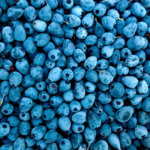Calories are a unit of measurement for the energy content of food and beverages.
Our bodies store extra calories as body fat when we consume more calories through food and drink than we burn off. If this keeps happening, we might eventually gain weight.
To maintain a healthy body weight, an average male needs approximately 2,500 kcal per day.
That works out to about 2,000 kcal (8,400 kJ) per day for the average lady.
Age, size, and levels of physical activity are a few more factors that can affect these results.
Energy and Calories Balance
To keep us alive and ensure that our organs are operating appropriately, our bodies require energy.
We give our bodies energy when we eat and drink. Our daily activities, such as breathing and jogging, cause our bodies to expend that energy.
The energy we put into our bodies must match the energy we use during regular biological processes and physical activity in order to maintain a stable weight.
Balancing the energy you put into your body with the energy you expend is a crucial component of a balanced diet.
For instance, we use more energy the more physical activity we engage in.
Do not worry if you consume too much energy in one day. Just make an effort to consume less energy the following days.
Monitoring the calories in food
Knowing how many calories are in the food and drink you consume can help you control your intake.
Many store-bought items have calorie information listed on the container as part of the nutrition label.
The “Energy” heading will provide this information. Kilocalories, abbreviated as kcals, and kilojoules, abbreviated as kJ, are two common units used to express the amount of calories in foods.
The term “calorie” is also known as a “kilocalorie,” so 1,000 calories will be represented as 1,000kcals.
Calories are measured in kilojoules in the metric system. By multiplying the calorie amount by 4.2, you may determine the energy content in kilojoules.
You may compare the calorie content of various goods by finding out how many calories are present in 100 grams or 100 milliliters of the meal or drink by reading the label.
On many labels, the quantity of calories in 1 serving of the meal is also listed.
But keep in mind that your definition of 1 serving may differ from the manufacturer’s, so the portion you serve yourself may have more calories.
The calorie information can be used to determine how a specific food fits into your daily calorie consumption.
Calorie Counters
For computers and mobile devices, a variety of online calorie counters are available. Many of these are available for free download and use.
You may check the calories in dishes when dining out because some restaurants include this information on their menus.
Calories ought to be provided per serving or meal.
Calorie Burning
Depending on a variety of variables, including size and age, the number of calories people burn when engaging in a particular physical activity varies.
You’ll burn more calories when you exercise more strenuously. For instance, walking quickly burns more calories than walking slowly.
If you’re gaining weight, it’s possible that you’ve been frequently consuming more calories than you’ve been burning off through food and drink
You must consistently expend more energy than you take in in order to lose weight.










